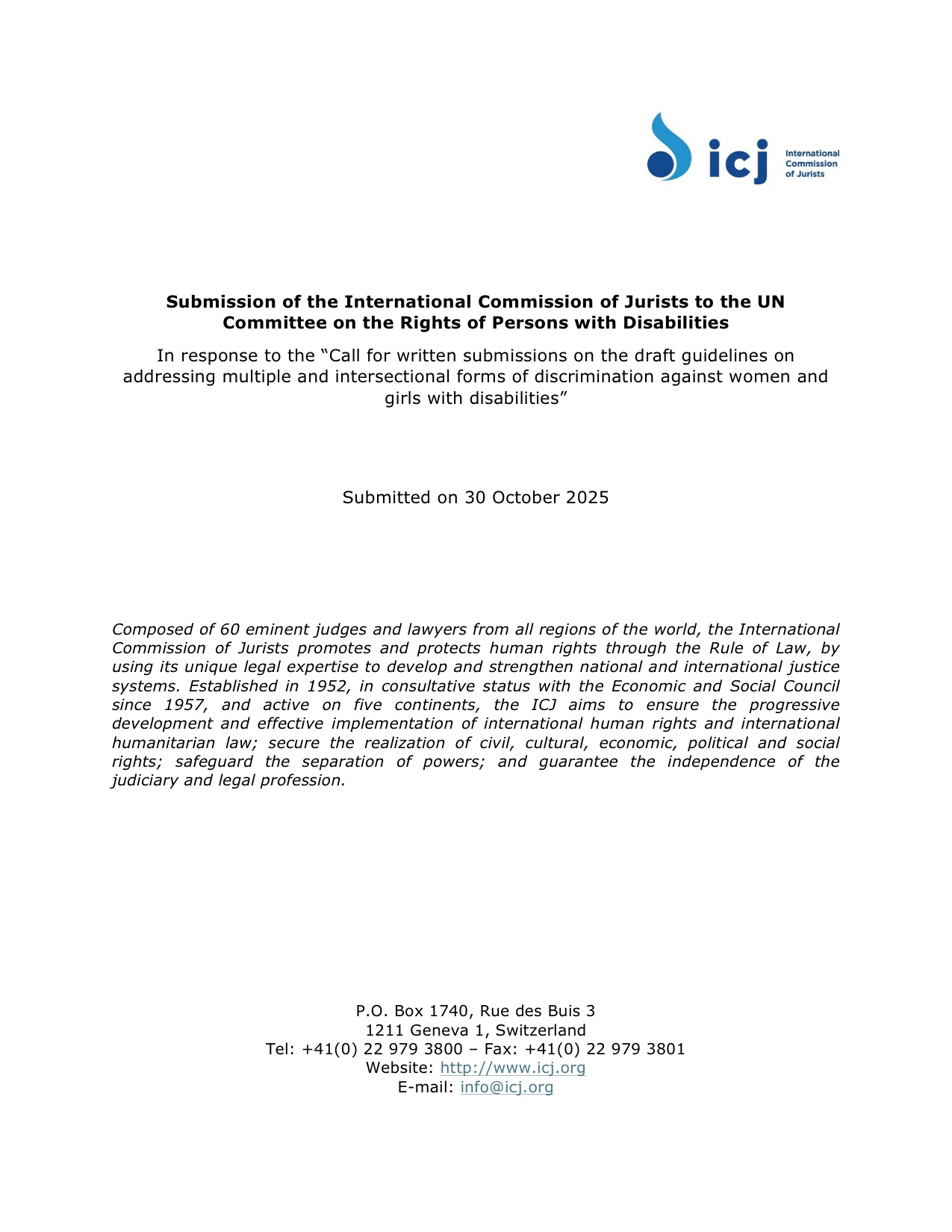Wang on US tariffs: Openness brings progress, closure leads to backwardness – chinadailyasia.com

Report on China’s Stance on Multilateralism and Sustainable Development
Advocacy for Openness as a Core Principle for Achieving Global Goals
A report from the ASEAN Plus foreign ministers’ meetings in Kuala Lumpur highlights China’s position on international cooperation, emphasizing that openness is crucial for progress while isolationism leads to regression. This stance directly addresses the global challenges of unilateralism versus multilateralism and is framed as a fundamental choice for all nations in the current international landscape. China’s stated commitment to greater openness aligns with the foundational principles of the Sustainable Development Goals (SDGs), particularly SDG 17 (Partnerships for the Goals).
Strategic Initiatives Supporting Sustainable Development
China has undertaken several key actions that actively contribute to the achievement of specific SDGs, demonstrating a commitment to global and regional partnerships.
- Promoting Trade for Least Developed Countries (LDCs): By providing zero-tariff treatment for products from LDCs and the African continent, China directly supports SDG 1 (No Poverty), SDG 10 (Reduced Inequalities), and SDG 17, specifically Target 17.12, which calls for duty-free and quota-free market access for LDCs.
- Strengthening Regional Economic Integration: The completion of negotiations for the Version 3.0 China-ASEAN Free Trade Area enhances regional cooperation, fostering conditions for SDG 8 (Decent Work and Economic Growth) and SDG 9 (Industry, Innovation and Infrastructure) within the region.
- Fostering Cross-Regional Cooperation: The establishment of new cooperative models, such as the ASEAN-China-GCC summit, exemplifies the spirit of SDG 17 by building multi-regional partnerships for development.
Assessment of Unilateral Tariffs as a Barrier to the 2030 Agenda
In contrast to cooperative approaches, the report identifies high tariffs imposed unilaterally as a significant impediment to global sustainable development. These measures are assessed as unsustainable and counterproductive to the collective effort required by the 2030 Agenda.
- Violation of International Trade Norms: The tariffs are cited as a clear violation of World Trade Organization rules, undermining the rules-based multilateral trading system championed by SDG 17 (Target 17.10).
- Disruption to Global Economic Stability: Such actions disrupt the stability of global production and supply chains, hindering progress towards SDG 8 and impeding the overall economic recovery necessary to fund and implement all SDGs.
- Erosion of Global Partnership: The unilateral nature of these tariffs is described as unpopular and irresponsible, working against the principles of unity and cooperation that are essential for addressing global challenges.
Reaffirming Commitment to Collective Progress
The report concludes with China’s pledge to stand with regional partners to promote unity and cooperation. China reaffirms its role as an advocate for multilateralism, a defender of free trade, and a contributor to open development, positioning these principles as indispensable for the successful realization of the Sustainable Development Goals.
Analysis of Sustainable Development Goals in the Article
1. Which SDGs are addressed or connected to the issues highlighted in the article?
-
SDG 8: Decent Work and Economic Growth
The article connects to SDG 8 by discussing global economic health. It highlights how high tariffs can hinder “the recovery and development of the world economy,” while open trade and cooperation are presented as essential for progress and growth.
-
SDG 10: Reduced Inequalities
This goal is addressed through China’s stated policy of providing “zero-tariff treatment for products to the least developed countries and the entire Africa.” This action directly aims to reduce inequalities between countries by giving preferential treatment to more vulnerable economies.
-
SDG 17: Partnerships for the Goals
The article is fundamentally about SDG 17. It contrasts unilateralism with multilateralism and emphasizes the importance of global and regional partnerships. Specific examples like the “ASEAN Plus foreign ministers’ meetings,” the “Version 3.0 China-ASEAN Free Trade Area,” and the “ASEAN-China-GCC summit” are cited as models of cooperation to achieve common goals.
2. What specific targets under those SDGs can be identified based on the article’s content?
-
Target 8.a: Increase Aid for Trade support for developing countries, in particular least developed countries.
This target is identifiable through the statement that “China has taken the initiative to provide zero-tariff treatment for products to the least developed countries.” Granting tariff-free access to markets is a significant form of Aid for Trade support, designed to help these countries integrate into the global economy.
-
Target 10.a: Implement the principle of special and differential treatment for developing countries, in particular least developed countries, in accordance with World Trade Organization agreements.
The provision of “zero-tariff treatment” for LDCs is a direct implementation of this principle. The article also reinforces the importance of this target by criticizing high tariffs as a “clear violation of World Trade Organization rules,” which govern such principles.
-
Target 17.10: Promote a universal, rules-based, open, non-discriminatory and equitable multilateral trading system under the World Trade Organization.
This target is central to the article’s message. China’s commitment to being “an advocate of multilateralism, a defender of free trade, and a contributor to open development” directly supports this target. The criticism of unilateral tariffs further underscores the preference for a rules-based multilateral system.
-
Target 17.16: Enhance the Global Partnership for Sustainable Development, complemented by multi-stakeholder partnerships.
The article explicitly mentions several partnerships that align with this target, including the “China-ASEAN Free Trade Area” and the “ASEAN-China-GCC summit,” which are presented as examples of “cross-regional cooperation” and collective strength.
3. Are there any indicators mentioned or implied in the article that can be used to measure progress towards the identified targets?
-
Indicator 10.a.1: Proportion of tariff lines applied to imports from least developed countries and developing countries with zero-tariff.
This indicator is directly referenced in the article through the phrase “zero-tariff treatment for products to the least developed countries.” This policy can be measured by tracking the percentage of products from LDCs that enter China without tariffs.
-
Implied Indicator for Target 8.a: Aid for Trade Commitments.
While not a formal indicator number, the commitment to provide “zero-tariff treatment” is a qualitative and measurable indicator of Aid for Trade support (Indicator 8.a.1). The value and scope of this treatment can be tracked.
-
Implied Indicator for Target 17.16: Existence and Progress of Regional and Cross-Regional Agreements.
The article points to the completion of “negotiations on the Version 3.0 China-ASEAN Free Trade Area” and the creation of a “new model of cross-regional cooperation at the ASEAN-China-GCC summit.” The existence, scope, and implementation status of these agreements serve as tangible indicators of progress in forming partnerships for development.
4. Table of SDGs, Targets, and Indicators
| SDGs | Targets | Indicators |
|---|---|---|
| SDG 8: Decent Work and Economic Growth | 8.a: Increase Aid for Trade support for developing countries, in particular least developed countries. | Implied Indicator (related to 8.a.1): Commitment to provide “zero-tariff treatment for products to the least developed countries.” |
| SDG 10: Reduced Inequalities | 10.a: Implement the principle of special and differential treatment for developing countries, in particular least developed countries. | 10.a.1: The policy of “zero-tariff treatment for products to the least developed countries” directly measures the proportion of tariff lines with zero-tariff. |
| SDG 17: Partnerships for the Goals | 17.10: Promote a universal, rules-based, open, non-discriminatory and equitable multilateral trading system. | Implied Indicator: Advocacy for multilateralism, defense of free trade, and adherence to WTO rules, contrasted with violations like unilateral high tariffs. |
| 17.16: Enhance the Global Partnership for Sustainable Development. | Implied Indicator: The establishment and advancement of specific partnerships, such as the “Version 3.0 China-ASEAN Free Trade Area” and the “ASEAN-China-GCC summit.” |
Source: chinadailyasia.com

What is Your Reaction?
 Like
0
Like
0
 Dislike
0
Dislike
0
 Love
0
Love
0
 Funny
0
Funny
0
 Angry
0
Angry
0
 Sad
0
Sad
0
 Wow
0
Wow
0


















-1920w.png?#)






















;Resize=805#)




































